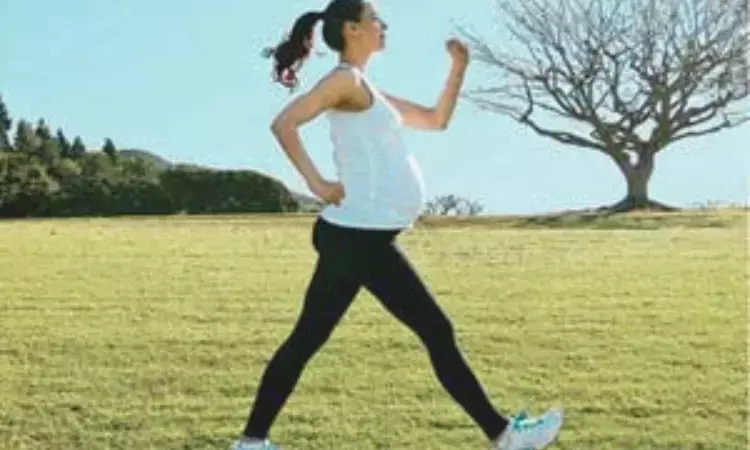- Home
- Medical news & Guidelines
- Anesthesiology
- Cardiology and CTVS
- Critical Care
- Dentistry
- Dermatology
- Diabetes and Endocrinology
- ENT
- Gastroenterology
- Medicine
- Nephrology
- Neurology
- Obstretics-Gynaecology
- Oncology
- Ophthalmology
- Orthopaedics
- Pediatrics-Neonatology
- Psychiatry
- Pulmonology
- Radiology
- Surgery
- Urology
- Laboratory Medicine
- Diet
- Nursing
- Paramedical
- Physiotherapy
- Health news
- Fact Check
- Bone Health Fact Check
- Brain Health Fact Check
- Cancer Related Fact Check
- Child Care Fact Check
- Dental and oral health fact check
- Diabetes and metabolic health fact check
- Diet and Nutrition Fact Check
- Eye and ENT Care Fact Check
- Fitness fact check
- Gut health fact check
- Heart health fact check
- Kidney health fact check
- Medical education fact check
- Men's health fact check
- Respiratory fact check
- Skin and hair care fact check
- Vaccine and Immunization fact check
- Women's health fact check
- AYUSH
- State News
- Andaman and Nicobar Islands
- Andhra Pradesh
- Arunachal Pradesh
- Assam
- Bihar
- Chandigarh
- Chattisgarh
- Dadra and Nagar Haveli
- Daman and Diu
- Delhi
- Goa
- Gujarat
- Haryana
- Himachal Pradesh
- Jammu & Kashmir
- Jharkhand
- Karnataka
- Kerala
- Ladakh
- Lakshadweep
- Madhya Pradesh
- Maharashtra
- Manipur
- Meghalaya
- Mizoram
- Nagaland
- Odisha
- Puducherry
- Punjab
- Rajasthan
- Sikkim
- Tamil Nadu
- Telangana
- Tripura
- Uttar Pradesh
- Uttrakhand
- West Bengal
- Medical Education
- Industry
Study Exploring Benefits and Risks of Exercise During Pregnancy

Recent research study aimed to describe the exercise levels, pregnancy, and maternal and neonatal health outcomes in elite and recreational athletes who exceed the general physical activity recommendations during pregnancy. The study was part of the larger Strong Mama research project and included 60 pregnant elite (n=10) and recreational (n=50) athletes between 26-35 weeks gestation.
Exercise Patterns
The elite athletes exercised on average 11.6 hours per week during pregnancy, comprising mainly endurance exercise at low to moderate intensities. The recreational athletes exercised on average 7.0 hours per week, with similar amounts of resistance training as the elite group. After birth, both groups resumed exercise within the first 6 weeks postpartum, with the elite athletes exercising more hours per week than the recreational athletes.
Maternal Health
In terms of maternal health, a small number of elite athletes experienced pregnancy complications like gestational diabetes and hypertension, while none of the recreational athletes reported any complications. Most athletes in both groups were satisfied with their lives and rated their health as very good or excellent during and after pregnancy. One recreational athlete showed signs of an eating disorder during pregnancy. Regarding delivery outcomes, the majority of athletes had spontaneous vaginal births, with a slightly higher rate of vacuum deliveries compared to the general population. However, the rates of cesarean sections were similar to population data. The athletes also reported high levels of labor pain and exertion. Neonatal outcomes were generally positive, with no low birth weights and only one preterm birth. A higher percentage of recreational athletes had babies over 4000g compared to population data, but this did not seem to negatively impact delivery. The authors noted that while the small sample size precludes statistical comparisons, the findings suggest that high-volume, high-intensity exercise during pregnancy may not pose significant risks to maternal and neonatal health in this group of highly fit athletes. However, they emphasize the need for more research in this understudied population to confirm these observations.
Key Points
1. The study aimed to describe the exercise levels, pregnancy, and maternal and neonatal health outcomes in elite and recreational athletes who exceed the general physical activity recommendations during pregnancy.
2. The elite athletes exercised on average 11.6 hours per week during pregnancy, primarily engaging in endurance exercise at low to moderate intensities, while the recreational athletes exercised on average 7.0 hours per week, with similar amounts of resistance training as the elite group. Both groups resumed exercise within the first 6 weeks postpartum, with the elite athletes exercising more hours per week than the recreational athletes.
3. Regarding maternal health, a small number of elite athletes experienced pregnancy complications like gestational diabetes and hypertension, while none of the recreational athletes reported any complications. Most athletes in both groups were satisfied with their lives and rated their health as very good or excellent during and after pregnancy. One recreational athlete showed signs of an eating disorder during pregnancy.
4. The majority of athletes had spontaneous vaginal births, with a slightly higher rate of vacuum deliveries compared to the general population, but the rates of cesarean sections were similar to population data. The athletes also reported high levels of labor pain and exertion.
5. Neonatal outcomes were generally positive, with no low birth weights and only one preterm birth. A higher percentage of recreational athletes had babies over 4000g compared to population data, but this did not seem to negatively impact delivery.
6. The authors noted that while the small sample size precludes statistical comparisons, the findings suggest that high-volume, high-intensity exercise during pregnancy may not pose significant risks to maternal and neonatal health in this group of highly fit athletes, but more research is needed to confirm these observations.
Reference –
Emilie Mass Dalhaug et al. (2025). Exceeding The Guidelines: A Descriptive Study Of Exercise, Pregnancy, Maternal And Neonatal Health Outcomes In Elite And Recreational Athletes. *BMC Pregnancy And Childbirth*, 25. https://doi.org/10.1186/s12884-025-07572-6.


